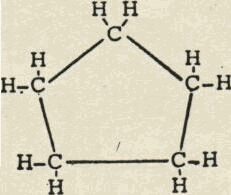
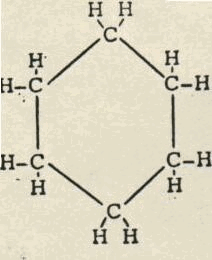
Basic Chemistry as Applied to Refining
REFINERY FUNDAMENTALS
Petroleum refining is the process of separation of the different hydrocarbons and conversion of some of the hydrocarbons into products having for higher quality performance and also to suit the market requirements. Crude oil as it is taken offthe ground does not contain the fractions in the proportion of consumer demands and of the right quality. For example, gasoline cut or naphtha has a poor octane number. Kerosene has undesirable odour and high sulphur content, Furnace oil content may be of higher proportion than the product demand. From the time the crude oil was discovered, the refining processes have advanced from a simple batch distillation process to separate only the kerosene fraction to a highly technical process utilising the last fraction of the crude to make as many as 200—250 different products. The multitude of equipments and pipelines in the petroleum refinery perform this transformation. In the modern refineries, it is of paramount importance that the operating personnel have a basic understanding of the hydrocarbon molecule and the changes that can be made to it to improve quality and produce new products.
Origin of Crude Oil
Crude petroleum is believed to have formed by the transformation of organic materials and marine organism deep under the surface of earth under the conditions that exist in that layer of earth. It is believed that this transformation has taken place in the course of millions of years. The presence of crude oil is detected by seismographic survey and is pumped out by drilling wells. The composition of the crude changes depending on the geographical area of the source and it may
change even from well to well in the same area. The types of crude and their classification will be discussed later.
BASIC CHEMISTRY
CHARACTERISTICS OF PROCESS MATERIALS AND HYDROCARBONS
All the matter that exist in the world can be classified into three categories viz., elements, compounds and mixture of compounds. For example, crude oil is a mixture of many compounds, iron and gold are elements, water is a compound. Each of these can exist in three states of matter namely gas, liquid or solid.
Elements
Elements can be defined as the basic material from which all the substances are made. There are over 92 elements, but five of these elements make up more than 90% of the things in the world. They are oxygen, silicon, aluminum, iron and calcium.
Atoms
An atom is the smallest particle of an element which can exist and still have the properties of the element. They are the pieces that combine to form molecules. For example, methane molecule gas is made up of one atom of carbon and four atoms of hydrogen (C H 4 ). When the atoms of the same kind cling to one another they form an element. They are held together by the mutual attraction of their masses.
Atoms are incredibly small. There are many millions of atoms In the smallest speck that can be seen with the naked eye. Each atom consists of a nucleus composed of protons and neutrons with electrons orbiting around the nucleus. The atoms or none of its parts can be seen even with most powerful microscope. The nucleus gives the atom Its mass and electrons determine the many chemical properties of the atom.
Molecules
Molecules are the smallest particle of a matter that can exist in the free state and maintain the properties of original substance. It may be a single chemical combination of two or more atoms, e.g. sodium hydroxide (NaOH), or two or more like atoms, e.g. Hydrogen and Oxygen ( N2, Os ).
Compounds
Compounds are the result of chemical reactions between two or more elements in which two or more atoms combine in a fixed pattern to form molecules. This action is not to be confused with the simple mixing, of two substances. The burning of carbon involves the combination of atoms of carbon with atoms of oxygen. This is a chemical reaction and a new product of carbon-dioxide is formed.
Chemical formula
The chemists use symbols for the elements and combine them into formulae to show the constitution of chemical compounds. Every atom is identified by a symbol. For example Hydrogen is H., Oxygen is 0, Carbon is C, Nitrogen is N, Sodium is Na, Lead is Pb., and so on.
The formula for a compound is a combination of the symbols of the atoms that compose its molecule. Thus water is H2O, Carbon-dioxide is CO 2. Methane is C H 4 and so on. The chemical reaction of carbon and oxygen mentioned earlier can be represented in a equation thus:—
C + O2 = CO2
Carbon + Oxygen = Carbon-dioxide.
Formation of Hydrocarbons
From the reaction of the carbon and oxygen, one might think that hydrocarbons can be made by heating hydrogen with carbon. But this is true only for two of the simple hydrocarbons viz., methane and acetylene. Fortunately, hydrocarbons are formed by nature through slow decomposition of marine organisms and organic substances as crude oil in the underground cavities of earth. As mentioned earlier, crude oil is a complex mixture of many different hydrocarbons.
This leads to two new words, Organic compounds and Inorganic compounds, which can be defined as follows. Organic compounds are the compounds of carbon and forms the largest group of compounds that we come across in our everyday life. All the hydrocarbons that we deal within the refinery are organic compounds. Inorganic compounds, the other main group of compounds are the compounds that does not include carbon in the molecular structure.
Types of Hydrocarbons
Hydrocarbon is the name given to the large family of chemical compounds made up entirely of carbon and hydrogen. The carbon atoms can be joined together as long chains, short chains, single rings, double rings and many combinations of these. While the number of carbons in any particular type of skeleton may vary, the properties of that particular kind of skeleton bear some similarity and these skeletons are called families of hydrocarbons.
The most important hydrocarbon families are listed below:—
Hydrocarbon family. Distinguishing characteristics.
1. Paraffins Straight carbon chain
2. Iso-paraffins Branched carbon chain
3. Olefms One pair of carbon atoms held together with two arms.
4. Napthenes 5 or 6 carbon atoms in a ring.
5. Aromatics 6 Carbon atoms in a ring with 3 " two-armed " linkages.
Paraffins
The simplest of a paraffin hydrocarbon is methane. It is composed of one carbon atom and 4 hydrogen atoms and is usually written as CK» and the structural formula is
H
H—C—H
H
The carbon atom has 4 valencies and can be thought to have four arms and hydrogen is monovalent or has only one arm. The structure formula is very important because the several hydrocarbons having the same carbon and hydrogen atoms can have different structures
and quite different properties.
Carbon atoms can join with other carbon atoms as well as with hydrogen. When the carbon atoms are joined in a chain, they are called paraffin hydrocarbons or members of paraffin family. All members of paraffin family have a name ending in " — ane " and the first part of the name generally indicates how many carbon atoms are attached together. The boiling point increases as the number of carbon atom increases. As the molecules become longer, having as many as 25 to 40 carbon atoms, they become waxy solids familiarly known as paraffin wax. The molecules in asphalt may even be larger. The straight chain compounds are commonly referred to as normal paraffins. Normal paraffins do not make good gasoline because they knock in the engine and are said to have
a low octane number.
The first six members of the paraffin family and their structure and boiling points are as follows:—
Name Formula Structure Form Boiling Point
H
Methane CH4 H—C—H Gas -161°C
H
H H
Ethane C2H6 H—C—C—H Gas -89°C
H H
H H H
Propane C3H3 H—C—C—C—H Gas -42.22C
H H H
H H H H
Butane C 4 H 10 H—C—C—C—C—H Gas -0-56°C
H H H H
H H H H H
Pentane C5 H12 H—C—C—C—C—C—H Liquid +37-2°C
H H H H H
H H H H H H
Hexane C6H14 H—C—C—C—C—C—C—H Liquid +68-89°C
H H H H H H
From the above formulae it can be observed that the molecular formula for paraffin family conform to the general formula Cn H(2n+2) wherein is the number of carbon atoms.
The other kind of hydrocarbons in which the carbon atoms are arranged in a chain having branch side chains. They do not knock as readily as the straight chain compounds and make better gasoline. The simplest example of branched chain hydrocarbon is the one having 4 carbon atoms,
and is known as iso-butane. This is typical of the hydrocarbon family of iso-paraffins and its strucutral formation is as follows
H H H
Iso Butane C4H10 H-C-C-C-H
H | H
H-C-H
H
Note that the simple formula is the same as normal butane i.e. C4H10 but the properties are different as mentioned earlier. As the number of carbon atoms increases the number of possible isomers also increases. The word isomer means "same". Isomers are the compounds have the same formula, but the atoms are arranged differently/ Because of the special significance of isomers to oil refining, one other example of Iso-octane us given below.
H H
H-C-H H-C-H
H | H | H
H-C- C - C - C - C -H
H | H H H
H-C-H
H
This compound is one of the best hydrocarbons for petrol as it does not cause knocking in the engine. Therefore, it has been given a value of 100 octane for comparison of petrols to be tested. Normal heptane is given a value of 0 octane as it performs poorly in an engine. If a petrol is specified to have an octane number of 85, it means that the petrol will behave as mixture of 85 percent iso-octane and 15 percent of normal heptane, as far as the knocking qualities are concerned.
Olefins
The second general family of hydrocarbons consists of straight- chain unsaturated compounds called olefins. These do not occur in the crude oil, but are formed during processing like cracking of gas oil. They differ from straight chain compounds because they do not carry as many hydrogen atoms as they can carry and are generally short of two hydrogen atoms. In absence of these hydrogen atoms two of the carbon atoms are linked together to satisfy the valency of carbon by two hands. This linkage is called double bond. The names of the olefin family hydrocarbons are similar to that paraffin family except that they all end in —ene. The simplest member of the family is called ethylene C 2 H 4 structurally written as;
H-C=C-H
H H
Since the molecules are not saturated with hydrogen olefin are sometimes called as unsaturates.
Contrary to normal logical assumption, the double bond is a point of weakness than strength and is the point of "high chemical activity". These hydrocarbons enter into chemical reactions more readily
than paraffins. Just like paraffins, all olefin compounds can exist in isomeric forms provided the molecules contain four or more carbon atoms. The 'possible isomers are many more than paraffins as the double bond can occur between any two carbon atoms.
The low molecular weight olefins have, in general, good anti-knock properties when present in petrol, but are excluded from aviation gasolines. The anti-knock properties of olefins cannot be improved much by addition of TEL Olefins can easily react with hydrogen to form paraffins and also have a strong tendency to combine with the other molecules and form polymers.
Naphthenes
The third group of hydrocarbons are the saturated ring compounds and are known as naphthenes. Their structure is represented in a ring and therefore in naming naphthenes the word •cyclo' is used as a prefix to indicate that the carbon atoms are linked to form rings.
Two examples Cyclopentane and Cyclohexane are shown below:


CYCLOPENTANE CYCLOHEXANE
Aromatics are easily attacked by acid, but do not form gum in storage. They are low in hydrogen content and consequently have a low heating value and therefore are not desirable components of Aviation gasoline. Aromatics make a poor lubricating oil stock as they easily oxidise to form sludge. Aromatics are very harmful when breathed or when it comes in contact with skin and proper protective equipments must be worn when handling them.
Sulphur Compounds in Crude Oil
Some of the sulphur compounds generally present in Crude oil are Hydrogen sulphide and mercaptans. Both these are undesirable and processes are always incorporated in refineries to remove these compounds from finished products either by chemically converting them to other
compounds, like in Merox fixed bed process, or removing them by converting the mercaptans to H zS as is done in the Hydrodesulphurisers. The sulphur is recovered from the hydrogen sulphide thus formed in our sulphur recovery plant.
Mercaptans are the compounds of hydrocarbon and sulphur. They have the general formula R—SH where R stands for hydrocarbon redical and SH is the mercaptan portion of the molecule. Mercaptans have a foul odour and therefore have to be converted into odourless compounds or removed by reduction- Presence of mercaptans in gasoline components reduces lead susceptability of the component and the sulphur in the molecule combines with oxygen in the car engine forming
corrosive sulphurous acid. A typical mercaptan can be represented as follows:
H H H H H H
H—C—C—C -C—C—C——S—H
H H H H H H
R= Organic radical Mercaptain radical
The process of converting mercaptains into odourless disulphides is called " Sweetening".
Sulphur is present in the crude oil in a third form called thio-phenes. Thiophene Is represented as
H-C -------H-C
H-C -------H-C
S
During the process of hydrodesulphurlsing this compound is converted into hydrocarbon and H 2 S.
Nitrogen and Oxygen Compounds in Crude Oil
Crude petroleum also contains nitrogen and oxygen compounds in very small proportions usually less than 0. 1%, but some may contain as high as 1 to 2%. They create problems in processing and storage of the petroleum products.
Nitrogen compounds such as quinolines, pyrioline, pyrolle, indole have been identified in crude oil. The structural formula of Quinoline and Pyradine are given below:
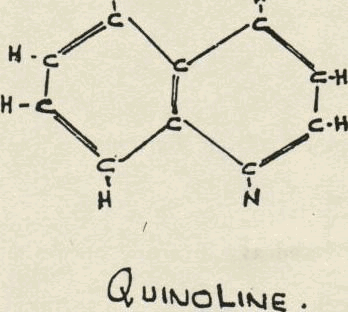
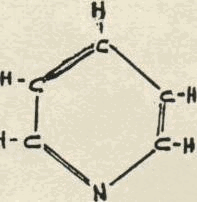
Presence of nitrogen compounds in gasoline and kerosene degrades the colour of the products on exposure to sunlight. In geso- line, they may cause gum formation. Nitrogen is removed from the
products by a hydrogenation reaction in which the organic compounds are converted into ammonia and hydrocarbons. The ammonia is easily removed by stripping or fractionation. This is achieved In hydrogen creaters.
The oxygen compounds present in crude oil exists as orga-nic acids or phenols. They are usually concentrated in the gas oil fraction of the crude. The organic oxygen compounds are converted
into water and hydrocarbons in a desulphuriser plant as shown in the following reaction

Application of Chemistry in Petroleum Refining
The application of chemistry in crude oil refining ranges from simple neutralisation of acidic compounds to chemical processes like reforming, hydrodesulphurisation, cracking and so on.
Injection of ammonia in the fractionator tower overheads, caustic soda to the waste neutralisation section and addition of soda ash to the reclaimer in MEA treating systems are examples of the neutrali-sation acidic compounds.
Removal of undesirable components converting the compounds by chemical reaction to easily separable compounds and improving product quality by rearrangement of the molecular structure are carried out in process units like Hydrodesulphurisers, Platformer and Thermal Cracker and Visbreaker units.
The platformer rearranges the molecules of low Octane naphtha obtained by fractionation of crude in presence of a catalyst to produce high octane naphtha. The general name for this process is catalytic reforming. The basic chemical reaction taking place in the platformer are a) Dehydrogenation, b) Isomerization, c) Dehydrocyclization and d) Hydrocracking.
Dehydrogenation is the removal of hydrogen from saturated molecules to form higher octane molecules. The most important type of dehydrogenation in the platfomer unit is the changing of cycloparaffins (naphthene) to aromatic. A typical reaction is represented below.
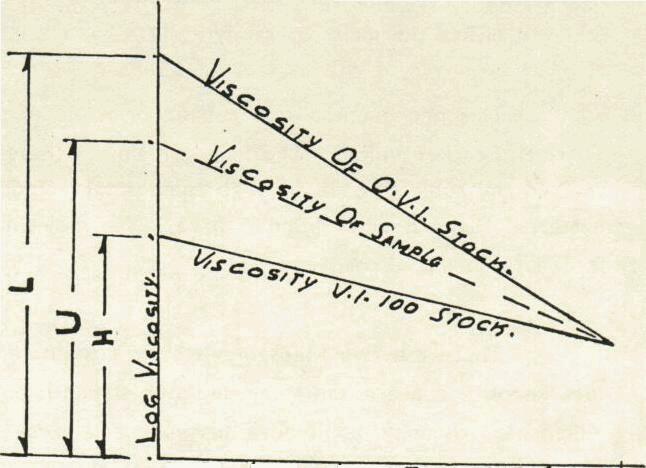
Isomerization is the rearrangement of molecules and dehydrocyclisation is the closing of straight chain molecules into mg. type molecules. Hydrocracking is the break up of large molecules into smaller molecules in presence of hydrogen. the typical reactions are given below.
The hydro-sulpuhurisers remove the undesirable compounds of sulphur, nitrogen, and unstable olefins into H2S, NH3 and stable hydrocarbons respectively in catalyst. The typical reactions are given below.
In thermal cracking and visbreaking of heavy oils, the oil is kept for a period of time under high temperature which causes the larger molecules to break up. The resultant product has random
distributtion of molecular sizes. The products obtained range from gas to heavy gas oils, thereby upgrading the heavy oils to more valuable products. Depending on the temperature and residence time, the production of lighter hydrocarbons can be varied. The chemical reaction that takes place is represented in a typical reaction below.
CHa — CH2 - CHz — CHz — CHi — CH2 — CHa =
CHa — CHi — CH = Chh
+ CHa — CH — CHa
The visbreaker is essentially a thermal cracker operation in milder conditions where the cracking of larger molecules of vacuum residuum is cracked into molecules in gas oil range. But for this
operation the vacuum residuum will have to be blended with other lower viscosity materials to meet fuel oil specification, which otherwise would have constituted more valuable products like HSDO or lubrication oil.